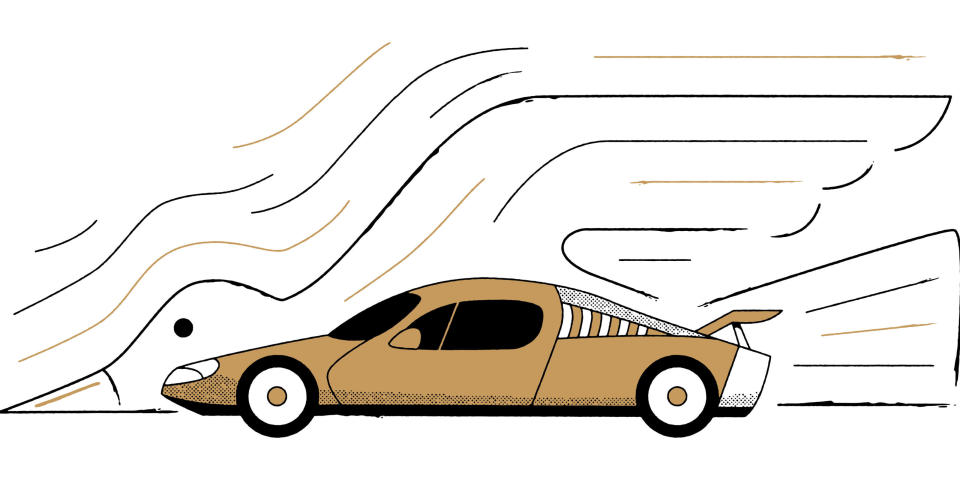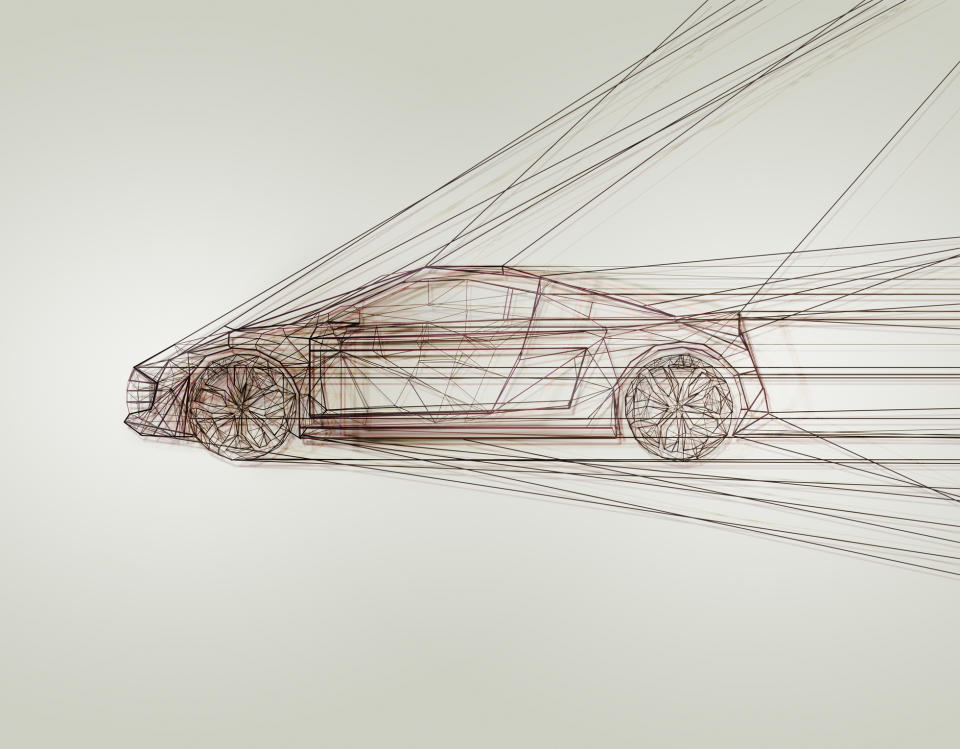The Next Big Breakthrough in Car Aerodynamics: Shape-Shifting

The auto industry is making a major move to smaller gas engines and electric vehicles, but changes in how cars are powered alone won't be enough. Our vehicles will need to become more efficient in every possible way and the clock is ticking. Carmakers have less than a decade, until 2025, for their fleets to be tested at a mind-blowing efficiency of 54.5 miles per gallon-not for their best cars, but as an average across all models. So auto engineers are back at their proverbial drawing boards, thinking deeply about how aerodynamics can help in their quest for greater efficiency. There's one big problem: the market's aerodynamic cars too often look-let's admit it-dorky.
"The fight is between designs that sell and aerodynamics that might look ugly," said Daniel Inman, chair of the Aerospace Engineering Department at the University of Michigan in Ann Arbor. "There's a constant battle between engineers and designers," he said. "But active aerodynamics might be a way around it."
Active aerodynamics is the ability for an automobile to to minimize drag by changing its shape based on operating conditions. This means designers can maintain the desired beautiful lines on a fine motor vehicle, but then move a car's body panels around to better manage air flow past its flanks, especially when traveling at highway speeds.
Inman and his colleagues in the aerospace department have recently been called upon by car companies to apply their aeronautical expertise to earth-bound vehicles. "The aircraft industry has been interested in aerodynamics from the beginning. Even the Wright Brothers had a wind tunnel," Inman explained. However, automotive aerodynamics have historically been relatively simple.

In the late 1920s, Packard introduced thermostat-controlled grille shutters on its luxury vehicles. When the engine got hot, the grille's vertical strip covers would rotate to allow cool air to flow under the hood. The primary goal was managing engine temperature, but drivers picked up better aerodynamics for free. By the 1950s, Citroën, the French automaker, developed a hydro-pneumatic suspension system so drivers could adjust a car's height for better ride quality or more ground clearance-while gaining efficiency benefits as well.
Mark Gleason, a semi-retired Detroit-based aerodynamic engineer with nearly four decades of working for major auto companies, experimented in the 1980s with active belly pans that rotated down to decrease flow under the car-as well door sills and wheel wells that moved to improve aerodynamics. Unfortunately, what is aerodynamic under one driving condition might not be advantageous for another, so finding durable and economics ways to change a car's shape at exactly the right time has been an obstacle to commercializing the technologies.
"If I'm on a high-speed straight-ahead road and then approach curves very rapidly, I would probably sacrifice some drag for downforce, to press the tires down on the ground for better handling," Gleason said. Heavy crosswinds would require a different ideal aerodynamic shape, as would panic braking. "If you need to jam on the brakes, then you want to nail the car into the ground," he said.
The Concept IAA embodies two cars in one
The good news is that recent advances in high-speed computer processors, precise controllers, and advanced lightweight materials allows for shape-shifting that wasn't possible in past generations. Mercedes-Benz showcased some of those technologies with its Concept IAA (Intelligent Aerodynamic Automobile) vehicle, unveiled at the 2015 Frankfurt Motor Show.
When the Concept IAA reaches a speed of about 50 miles per hour-or if the driver hits a button-eight interlaced sections extend in the rear, increasing the length of the car's tail by more than 15 inches. In addition, front louvers in the bumper shift to the side, while the bumper's dimensions grow by an inch in front and about 0.8-inches on the other side to get air moving around the car's front end and wheel arches. Active tire rims create a flat surface.
"The Concept IAA embodies two cars in one," said Gorden Wagener, head of design at Daimler AG. "The vehicle automatically switches from design mode to aerodynamic mode. Our goal was to create a symbiosis of beauty and intelligence."
Determining exactly what changes should happen and when resulted from more than one million hours of computer simulations, according to Alexander Hilliger, principal user experience software engineer at the Mercedes-Benz Research and Development North America. "This car was digitally simulated from the first moment of its conception," he said. "All the optimization was done with software. That's how we reached record-breaking low drag levels." The same three-dimensional graphical renderings are displayed on the dashboard-so passengers watch real-time representations of flaps and body panels being deployed, and how air patterns affect drag.

Prior to the morphing, the drag coefficient of the large Mercedes concept sedan is 0.25, similar to the Toyota Prius, a car known for its slippery profile. After the transmogrification, the drag drops to a staggering 0.19, beating the current leader in the industry, the sleek Mercedes-Benz CLA, which has a drag coefficient of 0.28. The moving body panels can be triggered by speed, sound or a flip of a switch. Active aerodynamics not only improve efficiency but reduce wind noise to make cabins quieter.
Meanwhile, the auto industry is already looking ahead to the next generation of active aerodynamics-an emerging field called avian-inspired morphing. Researchers are studying the subtle and various ways that birds change the shape of their wings when gliding. "We're trying to develop a material that senses the wind flow, a control system that almost instantly responds to flow conditions, and reconfigures its shape for maximum aerodynamic performance," said the University of Michigan's Inman, who also serves as the principal investigator for a related project sponsored by the United States Air Force Office of Scientific Research.
That work-which involves the use of piezoelectric devices and magneto rheological fluids (which can form different solid shapes based on magnetic fields)-is improving aerodynamics by as much as 40 percent in small aircraft. Automakers recently came knocking on Inman's door to see if the technology could one day also make cars slice through air like a bird.
You Might Also Like

 Yahoo Autos
Yahoo Autos 